- Saturday, 15 November 2025
Cycle Lane for Sustainable Tomorrow
 Lunibha Bajrachaya
Lunibha Bajrachaya
Today in the
early hours when everyone was rushing towards their workplace, my attention was
dragged to a behavior of traffic police as he forcefully thrashed a child out
of the cycle he was riding and threw the bicycle to the sideways. Since it was Kathmandu's office-hour with
chaotic traffic, the traffic may not have found any other option than to act in
such harsh way in order to ensure the safety of the children, as they were
riding among and in between the rushing cars. And to my surprise, this incident
bothered no one nearby. The incident, thus, brings in the darker reality of our
society. In one sphere of life, we are advocating to promote sustainable
society for future generation and on the other hand, we are discouraging the
future generation to work towards the sustainable environment. In such pretext,
the need of the cycle lane become even more demanding.
As a country who
is working hard to attain all its Sustainable Development Goals (SDGs) by 2030,
we are ignoring even the small steps. Though may look as a trifle issue, the provision
of dedicated cycle lane can only help to establish greener, less-chaotic and
healthier city. Bicycling, a healthier and sustainable mode of transport, can
reduce our carbon footprints in one hand. And, on the other hand, it also
promotes healthier citizen as cycling is believed to reduce the city-centered
diseases like obesity and diabetes.
The culture of
riding bicycle has to be promoted if we look forward to make our environment
grow healthier. The air pollution of Kathmandu has topped globally for the last
few years. The respiratory illness has been exacerbated with the degrading
quality of air. If we remember, government had to close schools across the
country for four days in 2021 as the air pollution was getting hazardous. The
importance of health has been widely experienced during the Covid-19 pandemic
as the health issue put an immense halt to the economy of entire world. If
there are proper dedicated cycle lanes ensuring the safety of the riders, then
the situation can be improved to visible extent. With zero emission, it can
lessen the pollution and in addition, build the health of citizen as well. This,
in return, can contribute to lower traffic congestion as well.
As per World Health
Organization (WHO), building safe infrastructure for walking and cycling means
assuring heath equity. A study
conducted by the American Council on Exercise (ACE) showed that cycling also promotes
production of Endorphins, a protein which is primarily synthesized by the pituitary
gland in response to the physiologic stressors such as pain. This is believed
to bring positivity in people. Also, cycling is believed by many as important
factor to improve eye vision. In addition, another research titled Study conducted Health Benefits Of Cycling: A
Systematic Study published in the Scandinavian Journal of Medicine and Science
in Sports suggests that regular cycling strengths heart muscles, lower
resting pulse and also reduces blood fat levels. New Leicester research stated that people who cycle to
work have two to three times less exposure to pollution than those who commute
in buses or cars as their lung functions better.
Cycling also
promotes socialization which is very essential for the man-kind. Kora, an
annual local-initiative of Nepal, is a perfect example where thousands of youth
participate voluntarily. The 14th edition of Kora happened on 20th
July last Saturday, attracting 4000cyclists riding in over 15 locations of
Nepal. The widely inclusive event with the people of various ages, gender and
locations participating for promoting greener mode of transport was a
spectacular in itself.
Despite of such
advantages, government is showing reluctance to build cycle lanes. Reasons can
be multiple including the lack of budget, public awareness, etc. But, it should
be widely accepted that investing in the cycle lane is not unnecessary expense
but smart decision for future. With the government struggling to stabilize
among competing demands of public and government priorities being more on other
developmental works, cycle lane is of no less importance. The long run return
of the cycle lane outweighs its initial cost.
Another main
reason for the cycle lane being not promoted by government is stated as space.
With no doubts, our urban development has created many narrow streets where
accommodating even two cars has become difficult. So, cycle lane is not given
priority. But many environmental engineer claims that if effective bike lanes
are properly planned, then cycle lane in such places can also be possible. In
comparison to the 3.5 m needed for private vehicles, bicycle lane requires only
1.5 m. So, cycle lanes can be planned as per the type of street available. Globally,
pedestrians are given foremost priority in urban planning followed by cyclist,
public transport and finally private cars at the last. However, we have
reversed urban planning as cars are our top-most priority This attitude has
aggravate the mobility of urban dwellers.
Another pushing
back factor for the cycling culture is the attitude as well. Often, cycling is
seemed as lower grade of transportation with people from lower economic status
opting to use bicycle for transportation. This has developed reluctance to use
cycle as daily commute for many people.
However, the
main reason for people looking for other mode of transport than cycling is the
safety and security of the riders in the road. The death of the renowned
conservationist and cyclist Pralad Yonzon in 2011 being hit by vehicle on his
bicycle is a stark reminder of the dangers bikers face each day. Seven years
later after the tragedy, cyclist Shyam Shrestha also faced the same fate as he
was drowned to death when his bicycle fell into an open drain in Kritipur.
While cyclists have to ride among the hustling cars and big buses, their
choices for commuting in cars is tantamount to death.
So, there has to
be strong national cycling law which motorist have to be abided by. Until and
unless, the traffic buses and motorcycles don’t follow rules and they don’t
priorities pedestrians and cyclists, the safety of cyclist will still be in
lurk and such incidents can occur more in future. The cycle lanes of today are
merely demarcated by the green-painted paths which is not enough to protect
cyclist. Cycle lanes have to be convenient, safe, continuous, unobstructed,
connected and direct.
It's not true
that government is at all negative towards introduction of cycle lane. Back in
December 29, 2019 , the then Minister of Culture, Tourism and Civil Aviation
Yogesh Bhattarai in a function held in Pokhara had said that the government is
preparing to open a cycle lane connecting all World Heritage sites of
Kathmandu. Though its current status is yet to be revealed, it at least shows
that the government has cycle lane in its concern. Likewise, 13.5 km Cycle Track for Local Social, Cultural and Economic
Development has been initiated in Suryodaya Municipality of Illam district. Lalitpur
Metropolitan City is thriving hard to promote cycle-friendly city. Mayor Chiri
Babu Maharjan is advocating for safe cycle lane and riders safety as well. In
collaboration with Nepal Cycle Society, Maharjan had introduced Cycle Act 2076
but, to dismay, it has fallen into deaf ear in the central and federal
government. Rather than improving the safety of cyclists, Department of Road
often states that there are not enough cyclists on street because of which cycle
lane doesn’t fall under the priority. Also, the officials of the department
along with some politicians perceive cycling as regression and so for
development, more vehicles has to be on the wide roads rather than the cycle
lane. Globally, it is said that the status of the development of the city is often
seen by the number of the cyclists on the street. But here in Nepal, we seem to
ignore the perspective.
Government
should be well aware of the situation that developing cycle lane is beneficial
for economy of nation as well. The private car centered urban planning is
draining so much of our economy. The higher traffic congestion and the higher
fuel they consume when stuck to traffic jams are damaging to our economy. The
lesson we can learn from Copenhagen is that we need to develop cycle-friendly
city rather than planning only urban highways and flyovers. Back in 1970s,
Copenhagen also had car-centric transport planning but they made a turnaround
raising the repercussion of such transportation. If we don’t act decisively at
time, then we are sure to meet damaging effect to our economy where all the
fuels are imported.
However, for
making the roads safer for cyclists and encouraging others also to use cycle as
their prepared mode of transport, government initiatives alone cannot bring
fruitful results. There has to be vigorous public awareness highlighting its
importance. The recent event of Kora can be best example to bring forth
benefits of cycling among local people. Youths, to some extent, seem interested
in promoting cycling but it has fallen deaf ear to the people in policy-making
levels. Some reformists are trying to
implement the cycle lane like the one done in Lalitpur. Along with the
construction of 4.7 kilometers of dedicated bike lane from Kupondole to Mangal
Bazar in 2019, Lalitpur's Mayor Chiri Babu Maharjan is struggling to foster
cycling culture in the city. He even initiated a public bike-sharing program to
encourage the cycling. But the Laliptur Cycle Law 2076 is not yet formulated
questioning the safety of the cyclist. Even his idea of creating a cycle lane
in the eight-lane ring road is opposed by Department of Roads stating that the
cycle lane is used by no one bringing the examples of cycle lane of
Tinkune-Maitighar cycle lane of Kathmandu. However, the urban planners and the
cycling enthusiasts claim the lane are flawed making it unsuitable for cycling
which makes the claim as baseless.
So, Kathmandu Valley should incorporate cycle lane in its planning. The valley is naturally bicycle-friendly as well as with relatively short distances between areas, moderate temperature, and few steep inclines which can be easily made cyclable when planning in urban areas. Even back in 60s and 90s, many valley residents used to cycle, providing testimony that it is feasible even today. Ministry of Physical Infrastructure and Transport along with Japan International Cooperation Agency had conducted a study in 2011 where they showed the suitability of cycling in valley. They stated that the average travel distance for private vehicles in the city is about five kilometer which is walkable and cyclable distance. And even for the terrain which is not too conducive for cycling, the road designs can be made in such way that they become friendlier for cycling. For instance, reducing the road gradient and building connecting bridges can be done. In addition, electric-assist and geared bicycles can easily cover such large distances and uphill terrain. So, someday, may be our roads will also have physically segregated cycle lanes where a child can cycle with ease and safely, all on their own.
(Bajracharya is an officer at National Archives of Nepal)



-original-thumb.jpg)

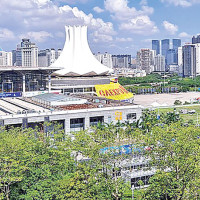
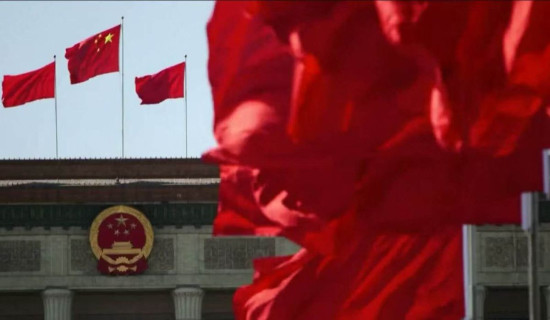


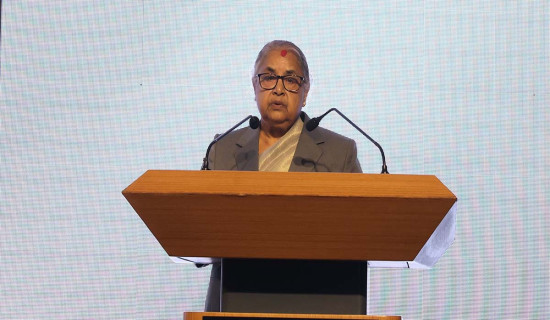


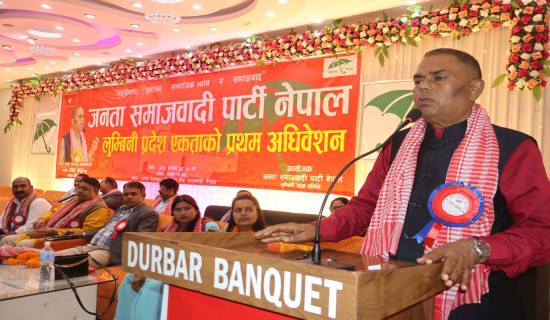
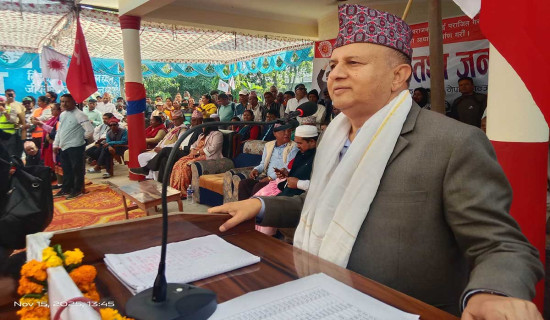

-original-thumb.jpg)
